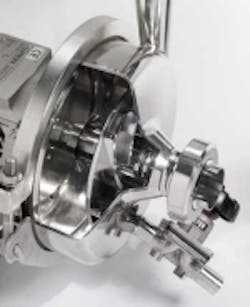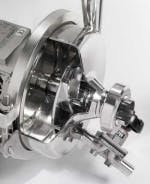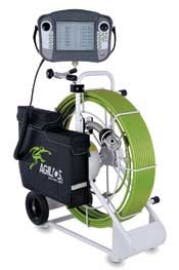Best Practice for Pumps used in WFI Systems
By Mogens Roy Olesen
Used in final formulation in the pharmaceutical industry, it is absolutely essential that water for injection (WFI) maintains its sterile condition. This is why the WFI system - and in particular the pump - must be carefully designed to deal with the demanding physical properties of pure water. Equally important, the pumps must be able to cope efficiently with the required flow and pressure and ensure that the sterility of the water is not jeopardized.
Shaft Seals
The shaft seal is one of the most critical components in terms of the pump's operational reliability in WFI systems. As a barrier between the pumped liquid and the surrounding environment, the shaft seal plays an important part in eliminating any risk of contamination of the sterile water - and in preventing leakage. In choosing the optimum shaft seal solution in WFI pumps the following critical aspects must be taken into account:
• Exposure to an "aggressive" liquid (WFI)
• Exposure to high temperature water (typically 80°C)
The optimum choice in material for shaft seals exposed to WFI is silicon carbide. Silicon carbide is a highly abrasion-resistant, chemical inactive and durable material, which is approved for shaft seals in pharmaceutical applications. Carbon/stainless steel shaft seals are unsuitable as carbon abrasion could interfere with the sterile status of the WFI.
The most challenging aspect of shaft seal operation in WFI systems is the fact that the purity and the relatively high temperature of the liquid combined cause poorer lubrication of the seal faces. This may induce noisy friction and wears heavily on the shaft seal. In this respect, choosing a pump with a double shaft seal is the optimum solution. A flushed double shaft seal with seal water offers the following advantages:
• Improved lubrication
• Better protection against dry running
• Efficient cooling of the shaft seal
• Increased operational safety by further safeguarding against contamination
• Significantly increased lifetime of the shaft seal.
The initial cost of a pump with a double shaft seal is obviously higher and so are the operational costs due to the consumption of cooling water for seal flush (typically 4-5 l/hr). However, the advantages often compensate for the difference if system downtime can be avoided.
Drainability
WFI systems invariably demand that pumps are fully drainable to ensure a reliable SIP (Sterilization In Place) operation. Vertically installed aseptic pumps offer improved drainability and operational safety compared to traditional pump systems.
Where traditional horizontal pumps must be fitted with separate drain valves, which add a dead leg on the casing, the self draining vertical pump has been designed without these potential sources of risk, allowing for a much safer production of WFI. The fewer hideaways bacteria are given, the less likely is the occurrence of contamination of the sterile water.
Control Systems
Water for injection must be constantly circulated in the distribution loop in order to maintain its sterile properties. This places great demand on the pump in terms of maintaining the correct pressure and flow at all times - even when water is being drawn from the system in large amounts. This can either be done by operating the pump at constant full speed or - preferably - by adjusting the speed according to the required flow by means of variable speed control.
The use of pump control is considered best practice in WFI systems as it offers a number of benefits:
• Reduced energy consumption
• Optimized system performance
• Increased comfort (e.g. less noise)
Today, pumps can be equipped with integrated frequency drives to ensure an optimum match between the frequency drive parameters and the actual pump requirements. This further reduces the time for parameter setting and significantly minimizes the risk of incorrect settings. Moreover, if the pump features external couplings between the motor and the pump shaft, the frequency drive and the motor can very quickly be replaced in case of maintenance - without having to re-sterilize the WFI system. IWW
About the Author: Mogens Roy Olesen, Segment Director for Grundfos' Process Industry division, holds a degree in Mechanical Engineering and in Business Administration. For the last 24 years Mogens has worked with the food, beverage and pharmaceutical industry in functions like process engineering, project management, project sales and business development. Before joining Grundfos, Mogens worked for companies such as GEA and APV.
Past IWW Issues


